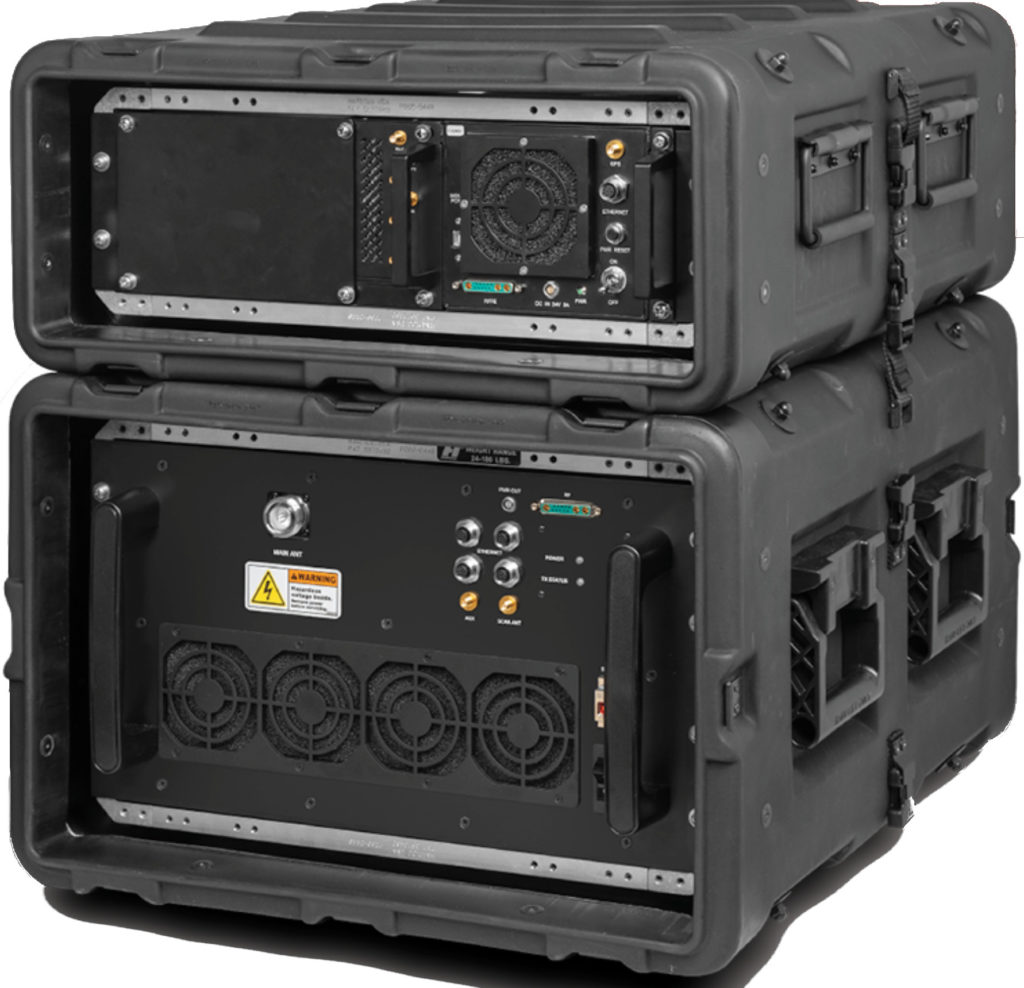With Harris Corporation no longer selling its cell site simulators to local law enforcement, Anaheim has joined a growing list of police departments replacing them with cell site simulators manufactured by Nyxcell and KeyW.

At a meeting of the Anaheim City Council on June 9, 2020, the Anaheim City Council approved the $755,000 purchase of a Nyxcell cell site simulator (CSS) from Tactical Support Equipment by a vote of 6-0-1, with Councilmember Jose Moreno abstaining because he felt he needed to learn more about how the CSS was used in the past. Although the name of the cell site simulator is redacted in documents, we were able to confirm that it is manufactured by Nyxcell.
Cell site simulators are used by law enforcement to track the location of cellular phones. They work by pretending to be a cell phone tower to which nearby cell phones will connect. Once connected to the CSS, the CSS obtains information unique to the cellular phone that allows it to be tracked. In order to connect to a target cell phone, the CSS is typically installed in a vehicle and once the cell phone is tracked to a general location, a handheld device is used to track the cell phone to a specific room or person. A CSS can also be used to eavesdrop on phone calls and text messages. The EFF has more information about how cell site simulators work.
This item was on the consent portion of the agenda, meaning that it was expected to be passed with a much larger group of items without any discussion at all by the Anaheim City Council. However, Councilmember Denise Barnes asked for the agenda item to be pulled from consent for a staff report. Barnes wanted more information so she could get her “mind around spending this money….on a cell phone site simulator.”
Police Chief Cisneros stated that the cell phone tracking equipment “has been in existence with the Anaheim Police Department since 2008. This will be the third vendor we have used since we began tracking cell phones.” [The other two were DRT and Harris.] According to Cisneros, the equipment was used “for search and rescue, critical missing people, locating injured or suicidal people who are unable to call for help, kidnap or ransom victims, hostage rescues, mass casualty threats, credible hostile threats against churches and religious groups throughout our community, human trafficking, mass murder fugitives… serial rapist investigations, etc.” Cisneros went on to say that the CSS has been used 1200 times in the last four years. However, the staff report stated, “The simulator is utilized an average of 150 times per year.” CSS logs provided in response to a public records request show that the CSS was used 86 times in 2018 and 196 times in 2019.
The reason for the purchase, Cisneros stated, is that “Our current generation of cell phone tracking equipment that we currently have… it is no longer going to be supported after July 2020.” According to the staff report, “The service contract with the existing manufacturer [Harris Corporation] ends in June 2020 and at that time the manufacturer will no longer support the existing equipment, rendering it obsolete.”
Councilmember Barnes asked how many time the equipment had been effective for locating at-risk persons or missing children, Cisneros said he didn’t have that information available. Barnes said that “if we’ve been using this [the CSS] since ’08, I take it that it’s been extremely effective for your department,” although no data was provided to the City Council about its effectiveness. Cisneros notes that Anaheim had to use the existing CSS for the county because of funding it received for the CSS from the Urban Areas Security Initiative (UASI), but now the CSS will be used mainly for Anaheim.
After Barnes moved to pass the item, Councilmember Moreno noted that he had express concerns about the technology that predated Cisneros. Moreno stated that the ACLU raised surveillance, privacy, and civil liberties concerns about CSS devices in 2016. Moreno also noted that the ACLU had to sue Anaheim to obtain public records pertaining to its CSS. Cisneros was happy to note that the policy required obtaining a search warrant before the CSS was used, but failed to note that the requirement for a search warrant was because of the California Electronic Communications Privacy Act, which was signed into law in 2015.
The equipment purchase includes all the tools needed to locate a cellular phone, cellular device, or wi-fi device. It includes an 8-channel base station unit designed to be installed in a vehicle for $518,600, a vehicular location system (which includes software and likely an antenna for the vehicle) for $60,000, a handheld Covert Hostile Emitter Angle Tracker Revised (C-HEATR), “rugged, portable, direction finding (DF) system used to locate RF emitters” for $40,716, and a 3-channel wi-fi direction finder for $60,000.
Supporting documents and audio: